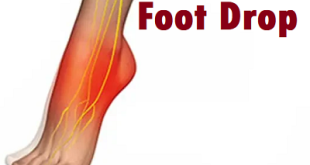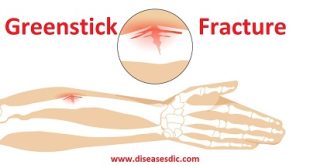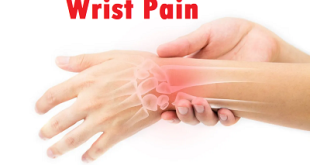Definition of foraminal stenosis
Foraminal stenosis is the narrowing of the cervical disc space. The foraminal canal is the transitional bony canal between the large spinal canal and the free nerve root passing out to the shoulder, arms and hands or buttock, thighs and legs. This narrowing puts pressure on the spinal cord and/or the spinal nerve roots, often leading to pain, tingling, numbness and muscle weakness.
The condition usually begins gradually and progresses over time. Depending on where the narrowing takes place, you may feel these symptoms in the lower back, buttocks, legs and feet, shoulder, arms, and hands.
Most symptoms are usually caused by one nerve root on one side and the condition is characterized by non-continuous pain developing slowly over many years, being related to an activity or a body position.
Types of foraminal stenosis
The three basic types of foraminal stenosis include lumbar stenosis, cervical stenosis, and thoracic stenosis.
Cervical Stenosis: Occurs along the foramen in your neck, which is where the uppermost portion of the spine is located. The pain that you will experience when the nerves in these foramen become pinched will likely be a sharp or even burning pain that’s situated primarily around your neck but can travel into the shoulders and the upper portions of your arm. When this condition is at its most severe, your hand and arm can feel numb and weak.
Thoracic Stenosis: This form of the condition affects the foramen that is located around your upper back. When the nerve roots in this area become pinched, numbness and pain will occur in the upper back, both of which can spread to the front portion of your body. While thoracic stenosis can be particularly painful, it’s the least common of the three types of foraminal stenosis.
Lumbar Stenosis: Occurs within the foramen that is located in the lower portion of your back. When the nerve roots towards the bottom of your spine become pinched, you can experience such symptoms as weakness, pain, tingling, and a general numbness. These symptoms can spread throughout your leg, buttocks, and possibly even your feet. Lumbar stenosis is by far the most common form of foraminal stenosis.
No matter which of the three types of foraminal stenosis you’re suffering from, the pain can worsen significantly when you perform strenuous activities. Make sure that you avoid twisting, bending, or reaching constantly when you’re suffering from foraminal stenosis. The pain can also worsen when you cough or sneeze, which is a clear sign that you’re affected by this condition.
Foraminal stenosis risk factors
While no one can prevent getting older, there are many other factors that can increase the risk of developing foraminal stenosis and nerve compression, including:
- Poor posture
- Being overweight or obese
- Using tobacco products
- Injury, including trauma and sports injuries
- Working in a job that requires repetitive movements or sitting all day
- An overly sedentary lifestyle
- Genetic factors, or a family history of spine conditions
While some foraminal stenosis risk factors cannot be avoided, especially age and genetics.
Causes of foraminal stenosis
Foraminal stenosis is caused by age-related degeneration of your vertebra. While this is the primary cause, there are other factors that can contribute to the severity of the symptoms you experience. Some examples of these factors include:
- Bone spurs
- Herniated disc
- Joint swelling
- Trauma/Injury
- Obesity
- Arthritis
Symptoms of foraminal stenosis
Foraminal Stenosis may be present but unnoticeable unless there is nerve compression involved.
Typical symptoms of nerve compression may include the following:
- Localized pain
- Referred pain
- Numbness
- Tingling sensations
- Weakness
- Burning sensations
- General discomfort and inability to participate in the day to day activities
Symptoms may vary depending on the location of the nerve compression, severe nerve compression can result in muscle weakness as the nerves and muscles are starved of nutrients – although permanent damage is rare.
Complications of foraminal stenosis
Sometimes foraminal stenosis can be accompanied by stenosis of the spinal column itself. When the spinal cord is compressed, the symptoms may be more severe than when the nerve roots are pinched.
These symptoms can include:
- Clumsiness
- Trouble using your hands
- Difficulty walking
- Weakness
Diagnosis and test
Diagnosis begins with a medical history. During a physical exam, your doctor will look for limitations on movement, pain, loss of reflexes or other symptoms when you move your spine. Other procedures that can help confirm the diagnosis include:
Bone scan – can detect arthritis, fractures, tumors, and infections.
Computerized tomography (CT scan) – can show the shape, size and nearby structures of the spinal canal.
Magnetic resonance imaging (MRI) – can be helpful in detecting damage or disease in the soft tissues, such as the discs between vertebrae or ligaments.
Myelogram – an opaque dye is injected into the spinal column followed by an MRI or CT scan; can show pressure on the spinal cord or nerves from herniated discs, bone spurs or tumors.
X-rays – can help rule out tumors, injuries or abnormalities.
Treatment for foraminal stenosis
Treatment for foraminal stenosis may include a combination of conservative therapy. For many, nonsurgical treatments are enough to relieve symptoms and trying a series of nonsurgical methods first is recommended for the treatment of foraminal stenosis.
Nonsurgical foraminal stenosis treatment options include:
Over-the-counter (OTC) pain relievers – Analgesics (acetaminophen) and nonsteroidal anti-inflammatory drugs (ibuprofen, naproxen) can help relieve mild to moderate pain and inflammation.
Prescription pain medication – For moderate to severe pain that isn’t relieved by OTC pain medications, your doctor may prescribe stronger pain medications, such as narcotics, for short term use.
Heat and cold – Applying heat and cold can help relieve pain and inflammation. Alternating between both has been found to be most effective.
Physical therapy – Strengthening and stretching exercises can help improve flexibility and restore range of motion while also strengthening the muscles in the back and abdomen that help support the spine.
Muscle relaxants – Your doctor may prescribe a muscle relaxant to ease muscle spasms.
Corticosteroid injections – Steroid medication is injected into the membrane that covers the spinal cord to help with severe pain that radiates down the leg.
Anesthetic injections – A numbing agent is injected into the spine to block nerve pain. Numbing agents are often used in combination with corticosteroids.
Bracing – A brace may be recommended for extra spinal support if you have especially weak abdominal muscles or degeneration that affects various levels of your spine.
When nonsurgical treatment for foraminal stenosis fails to provide sufficient relief after a few weeks, then surgical treatment may be recommended. There are a few different options when it comes to surgical treatment for foraminal stenosis, most of which can be performed using minimally invasive outpatient procedures.
Spinal decompression procedures are available to treat the spinal conditions that contribute to foraminal stenosis, including:
- Foraminotomy
- Discectomy
- Laminotomy/laminectomy
The goal of surgical foraminal stenosis treatment is to remove pressure off the compressed nerve and relieve foraminal stenosis symptoms that were not relieved with nonsurgical treatment. These procedures often provide immediate relief of symptoms and a quicker recovery than traditional open back surgery.
Prevention of foraminal stenosis
- The best way to prevent the development of foraminal stenosis is to take any steps necessary to improve the overall health of your spine.
- For example, obesity often leads to stenosis because the burden of supporting excess body weight strains the back, leading to muscle inflammation and nerve irritation.
- Conversely, regular exercise can strengthen the back and can help relieve the pressure being placed on the spine.
- Weight management, posture improvement, quitting smoking and optimizing workplace ergonomics are additional steps that doctors recommend to prevent this condition.
 Diseases Treatments Dictionary This is complete solution to read all diseases treatments Which covers Prevention, Causes, Symptoms, Medical Terms, Drugs, Prescription, Natural Remedies with cures and Treatments. Most of the common diseases were listed in names, split with categories.
Diseases Treatments Dictionary This is complete solution to read all diseases treatments Which covers Prevention, Causes, Symptoms, Medical Terms, Drugs, Prescription, Natural Remedies with cures and Treatments. Most of the common diseases were listed in names, split with categories.








can it also cause constipation?
Not it never causes constipation
Can one of the symtomps be a headache that’s like a migraine or tension headache
i have a problem of back pains and the chest. would this be foraminal stenosis?
This symptom might because of stress in the spinal nerves. It is advised to consult a doctor as soon as possible.
both legs of mine down to feet numb.my surgeon thinks a fusion.any complications after surgery with upper back when lower back is fused.? after healing
please consult a spine specialist.
which drug is to treat such act of sickness
There is no drug to treat foraminal stenosis but to reduce its pain there are painkillers. The permanent solutions for Exercise and Surgery.
any drug for lumber, thoraxic pain
Aspirin. But it is better to consult a pain management specialist for a permanent cure.
am having surious problem of gonorrhea i take treatment many atime take dros but no cure please help me tank you
please consult a doctor.
Thank you for your information.
which specialized doctors are dealing with this treatment(spinal decompression procedures)
Spine Surgeons.
good day.
which doctor s are dealing with spial decompression procedures
Spine surgeons will deal with spinal decompression procedures.
can this problem lead to poor ejaculation, uncontrollable urine and stools in man
Losing the ability to have sex is a symptom of lumbar spinal stenosis. Bowel and bladder incontinence — Nerve compression in the lumbar region can lead to a serious condition called cauda equine syndrome, in which a person may lose control of his or her bowels.